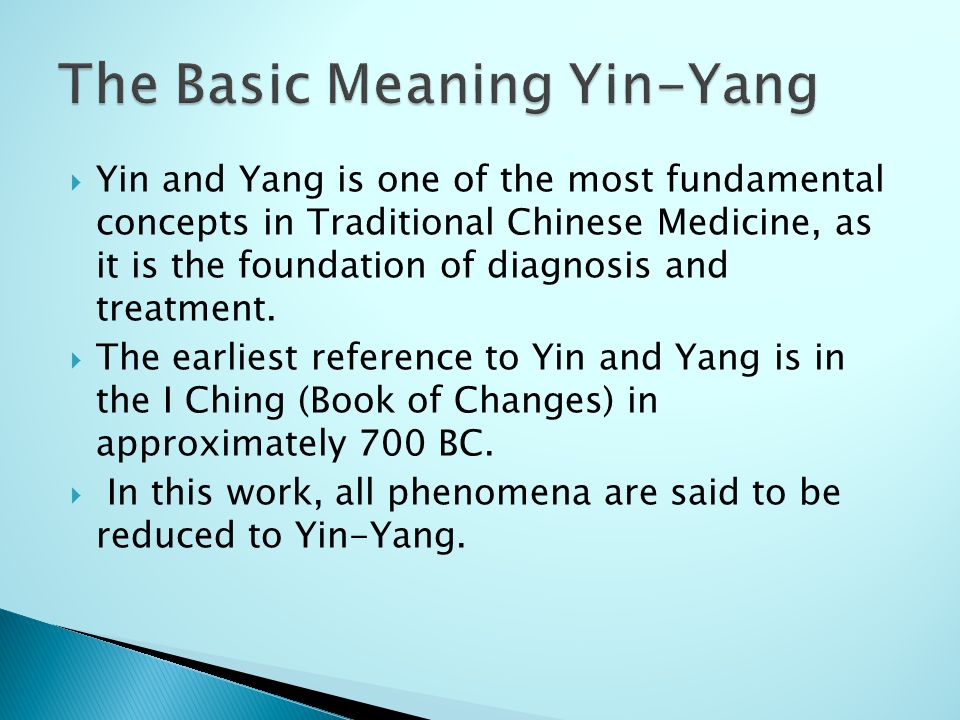


By contrast, only 1,422 papers on harmony have been published to date, and since 2012, less than 100 papers related to harmony have been published annually. Numerous psychological studies have examined conflict: A search of the APA PsycINFO database in 2015 retrieved 73,167 papers on conflict and conflict resolution, and from 2007 onward, 2,000–2,500 research papers have been published annually on this subject, which shows that conflict is a major topic of debate in psychology.
#CHINESE YIN AND YANG THEORY SERIES#
According to the definition and typology of Li (2012), this theory/model and the related series of research studies could be attributed to the “Eastern emic-as- emic” type of indigenous research, in which the aim is to build novel Eastern theories that complement/supplement or supersede Western theories.Ĭonflict has invariably been a common topic of interest in the social sciences and in psychology because conflict is inevitable in human society. Moreover, the work discussed in this paper shows that by combining qualitative and quantitative empirical research, the substantial theory can be developed and its underlying concepts can be validated. The primary objective here is to present a method to develop a formal psychological theory/model regarding interpersonal harmony and conflict founded on one specific aspect of Eastern philosophy, the Yin–Yang perspective. This article provides an overview on a series of research studies that the author conducted on interpersonal harmony and conflict. The work also mirrors the current conflict-management research that has incorporated the Chinese notion of harmony and adopted the Yin–Yang perspective on culture. Thus, this work represents the realization of a series of modern Chinese indigenous psychological research studies rooted in traditional cultural thought and the Yin–Yang perspective. Accordingly, by combining qualitative and quantitative empirical research, the relative substantial theory can be developed and the concepts can be validated. The claim presented herein is that Chinese traditional thought and the psychological theory/model based on the Yin–Yang perspective can be combined. Subsequently, the author conducted a series of quantitative studies on interpersonal harmony and conflict within parent–child, supervisor–subordinate, and friend–friend relationships in order to verify the construct validity and the predictive validity of the dynamic model of interpersonal harmony and conflict. Under this model, interpersonal harmony and conflict can be classified into genuine versus superficial harmony and authentic versus virtual focus conflict, and implicit/hidden conflict is regarded as superficial harmony. Next, a “dynamic model of interpersonal harmony and conflict” was developed, as a formal psychological theory, based on the real-virtual notions in the Yin–Yang perspective.

By contrast, the author’s work started from the viewpoint of a materialist conception of history and dialectics of harmonization in order to reinterpret traditional Chinese thought.

Psychological research in Western society has, intriguingly, long been focused more on interpersonal conflict than on interpersonal harmony. The paper also details how essential theories on interpersonal harmony and conflict were constructed under this formal model by conducting a qualitative study involving in-depth interviews with 30 adults. The aim here is to present the ideas that the author reconstructed, based on the dialectics of harmonization, regarding harmony and conflict embodied in traditional Chinese thought, and to describe how a formal psychological theory/model on interpersonal harmony and conflict was developed based on the Yin–Yang perspective. This article provides an overview on a series of original studies conducted by the author.


 0 kommentar(er)
0 kommentar(er)
